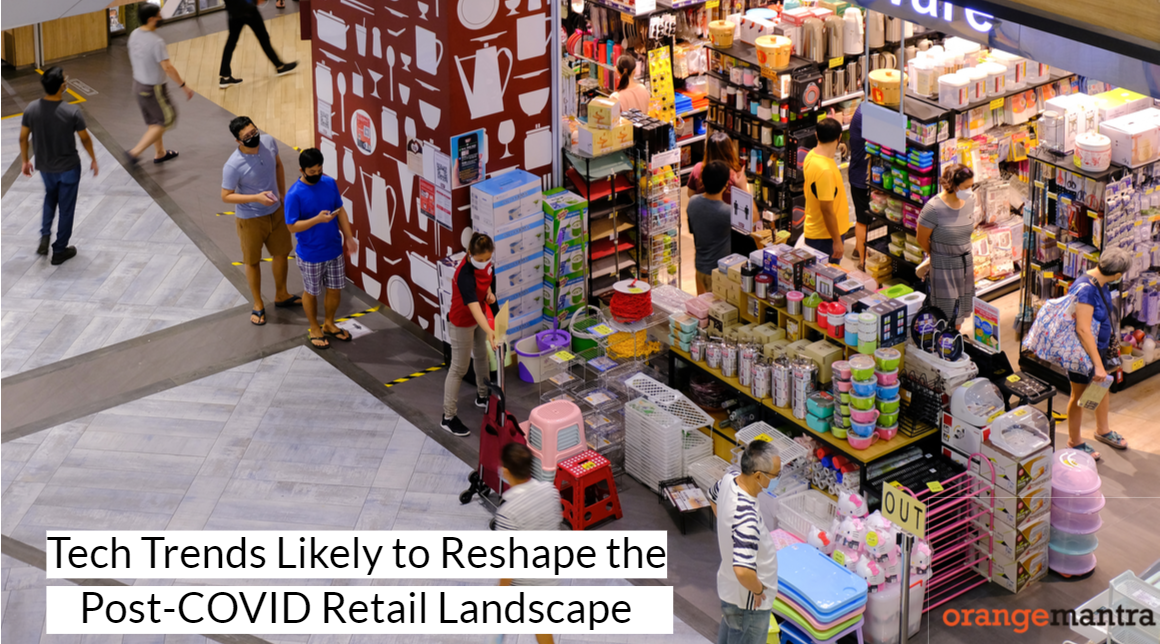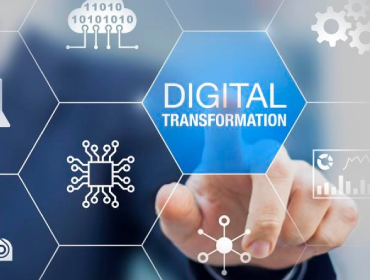Consumers shopping behaviors have transformed substantially in the pandemic era. While retailers try to best cope with these new patterns and demands, technology is playing the most significant role. From an unprecedented emphasis on digital experience to redesigning stores for physical distancing norms, the retail world is changing. And these changes are already paving the way for a new kind of post-COVID market where digital and physical experiences blend seamlessly.
More and more businesses today are relying on retail technology solutions to meet rapidly changing demands. In this post, we will discuss the most prominent technology trends impacting the immediate future of the retail industry.
Digital-focused retail operations
Coronavirus-induced lockdown and fear brought the physical retail market into a standstill. As businesses struggled just to survive the biggest disruption of the century, digital technology came for rescue. Businesses that already had digital presence were remarkably better at coping with the pandemic-driven economic freeze. Many businesses that were completely dependent on physical transactions started to adopt digital solutions. Demands for eCommerce website development and similar serve soared early in the pandemic. Only the retailers that are implementing a digital-focused strategy are likely to stay ahead amid the competition and uncertainty.
The pandemic has overwhelmingly accelerated the growth of eCommerce around the world. In the post-COVID market, retail businesses cannot afford to not have a digital-rich business plan. With growing innovation in B2C eCommerce solutions, the expectations of consumers are increasing rapidly. Retailers must plan their operations per these trends.
Redesigning stores for physical distancing
Public health concerns induced by the pandemic call for more spacious brick-and-mortar stores. Retailers now have a great responsibility of providing their customers with a safe in-person shopping experience. That requires more spacious stores, better ventilation, and strict hygiene practices, among other things. Digital solutions have significant roles to play in this new design. For example, cashless shopping will reduce human-to-human interaction for better safety. Digital monitoring and automatic processes will also help store owners to reduce staff.
Amazon launched the “Amazon Go” store in Seattle, Washington before the pandemic. The store is equipped with advanced shopping technologies and doesn’t have any staff. Shoppers with an Amazon account can enter by scanning their mobile device, pick the items they need, and leave the store. The fully automated store deducts the payable amount from the customer’s Amazon account. This kind of experience could become mainstream in the future with heightened public health concerns.
The rise of contactless shopping technologies
Contactless payment and other technologies were already there as the pandemic hit. But they never saw such rapid growth. The coronavirus-induced safety concerns propelled a sudden surge in the use of contactless technologies. And this trend is likely to dominate the post-COVID retail landscape. Be it contactless payment or AR/VR-enabled fashion retail, these retail technology solutions will likely remarkably change the way consumers interact with businesses.
These technologies will minimize the efforts required during in-person shopping. Besides, shoppers can have a more immersive buying experience when physical and digital experiences are mixed rightly. With consumers’ growing tendency to use contactless technologies, retailers are increasingly collaborating with tech companies to prepare for the post-pandemic market.
Data analytics for insight-driven business decisions
One of the biggest strategic advantages of digital commerce is the huge amount of customer data it generates. The rapidly shifting market and consumer behavior demand more strategic decisions by retailers. That’s where advanced data analytics and machine learning come into play. A growing number of retail companies are gearing up to use big data. The data-driven approach will help retailers accurately predict demands and trends, among other things. When combined with ML and other emerging technologies, data analytics could bring substantial dividends.
Efficient retail inventory management
Retailers already closely experienced the downsides of not managing inventory efficiently. As eCommerce demands skyrocketed early in the pandemic, many online retailers stumbled. Most were unable to deal with a completely broken supply chain. Retail businesses cannot afford to face such situations in the post-pandemic market. That’s why they need integrated inventory management practices.
As markets gradually reopen, retailers will race to provide a better shopping experience. That means ensuring a seamless supply chain. From meeting online shopping demands to having enough supply in the physical store, everything depends on inventory management. With the availability of cost-effective inventory management solutions, retailers can rely on technology more than ever. It enables them to ensure a better overall shopping experience across channels. Whether it’s digital or physical selling, failure-proof inventory management is a must in the post-COVID retail market.
Wrapping up
The post-COVID retail market will be likelier to be heavily tech-dominated. As more and more consumers become aware of public health measures, safety is likely to be a top priority. And that’s retailers need to rapidly adapt to the shifting trends before markets fully reopen.
Digital retail is no more limited to eCommerce website development and digital storefront management. With so many things in retail changing so rapidly, businesses need to adopt an agile approach when it comes to deploying technologies. At OrangeMantra, we have helped many retailers — big and small — to continue business amid the COVID-induced disruptions. We provide end-to-end digital retail solutions to fully upgrade sales, marketing, and inventory management, among other areas.
FAQs
Q. Why is digital payment important for businesses?
Digital payment solutions have become more important than ever in the pandemic-era retail market. Digital payment increases the safety and convenience of customers by minimizing human-to-human interaction.
Q. What is an omnichannel eCommerce strategy?
An omnichannel eCommerce strategy is an approach to sales and marketing that provides customers with a fully integrated shopping experience. It is achieved combining user experiences from brick-and-mortar to mobile-browsing, to social media everything in between.
Q. What is retail inventory management?
Inventory management is critical to maximizing revenue and maintaining desired customer service quality grocery retailing. Retailers should make sure that products are always on the shelf and properly priced. We provide efficient grocery inventory management solutions.
Q. What is online grocery retailing?
Online grocery retailing enables grocery store owners to sell goods via an eCommerce website. Online grocery store allows customers to order grocery items online and get delivery at their doorstep. Online grocery retailing can also be done through eCommerce mobile apps.






















